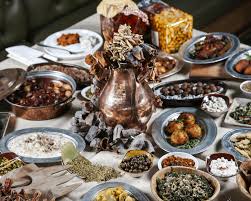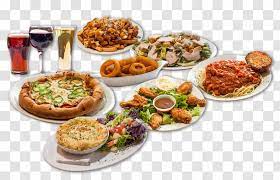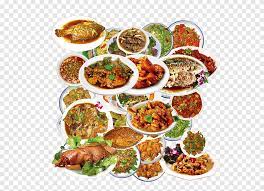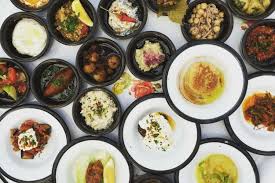A Culinary Odyssey: Exploring the Rich Tapestry of Turkish Cuisine
Turkish Cuisine

Introduction
Turkish food, which combines flavors from the Mediterranean, Central Asia, and the Middle East, is a tribute to the nation’s rich past. Turkish food is a gastronomic adventure that captures the cultural and geographic diversity of Turkey. It is renowned for its robust tastes, fragrant spices, and a broad variety of meals. This article explores the complex world of Turkish cuisine, looking at its components, meals that are famous, historical roots, and the cultural relevance of food in Turkish society.
Historical and Geographical Influences
Turkish food has its origins in the nomadic Turkic tribes that moved to Anatolia from Central Asia. Turkish culinary traditions are a unique tapestry developed over centuries by encounters with numerous civilizations such as the Ottomans, Persians, and Byzantines. A wide range of fruits, spices, and culinary methods were brought to the area by the impact of the Silk Road trade routes, which linked the East with the West.
Key Ingredients in Turkish Cuisine
- Spices: Ottoman cooking is recognized for its deft use of spices. Paprika, sumac, coriander, cumin, and red pepper flakes are just a handful of the spices that give Turkish food variety and depth.
- Olive Oil: In Turkish cookery, olive oil is an essential ingredient that’s utilized in salads, dressings, and vegetable sautéing. Numerous olive varieties may be found in Turkey, which adds to the nation’s high-quality olive oil production.
- Grains: In Turkish cuisine, bulgur, rice, and other wheat-based goods are staples. Pilaf is a bulgur or rice dish that is frequently served as a side dish with various meals.
- Yogurt: In Turkish cooking, yogurt is a flexible component that may be used in both savory and sweet recipes. Popular meals like cacık (yogurt with cucumber and mint) and ayran (a pleasant yogurt-based beverage) include it as a crucial ingredient.
- Eggplant and Bell Peppers: In Turkish cooking, these veggies are commonly used and are usually roasted, grilled, or mixed into stews and mezes.


Iconic Turkish Dishes
- Kebabs: The richness and succulence of Turkish kebabs are well-known globally and may be found in a variety of forms. Among the most popular are Adana kebab, which is made with minced meat and spices, and shish kebab, which is created with grilled and skewered meat.
- Mezes: Mezes, or small plates, are a mainstay of Turkish cuisine. These can include eggplant dishes (patlıcan salatası), filled grape leaves (dolma), and other spreads like hummus and muhammara.
- Baklava: Baklava is a delicious pastry consisting of layers of phyllo dough, nuts, and honey or syrup that is a representation of Turkish delicacies. It’s a delightfully decadent dessert that’s usually had on special occasions.
- Koftes: Made with ground beef and seasonings, these seasoned meatballs are a popular street snack that may be eaten on its own, in sandwiches, or as a main course.
- Manti: Manti, also known as Turkish dumplings, are little dough packages stuffed with minced meat and spices and usually eaten with butter flavored with garlic and yogurt.
Cultural Significance of Turkish Cuisine
Turkish food is ingrained in the nation’s culture and is a major part of both everyday life and festive events. A treasured custom that embodies the warmth and friendliness for which Turks are known is eating meals with family and friends. During celebratory events, food preparation is frequently a group endeavor, with several hands helping to create extravagant meals.
Furthermore, Turkish food has a strong connection to social and religious customs. While special foods like pide (Turkish flatbread) and güllaç (a traditional Ramadan dessert) are prepared throughout the holy month of Ramadan, the celebration of Eid al-Fitr is distinguished by the exchange of sweets and joyful dinners.
The significance of Turkish tea culture cannot be overstated. Drinking potent black tea from tiny cups is a communal pastime that encourages people to get together, chat, and spend quality time together.
Tourism and the Globalization of Turkish Cuisine
Turkish food has been receiving praise from all around the world lately, turning it into a culinary phenomenon. Turkish cuisine is renowned for its richness and diversity, and Turkish eateries and culinary festivals can be found all over the world. Turkish kebabs, baklava, and mezes have become international favorites, adding to the admiration of the nation’s culinary legacy on a worldwide scale.
Conclusion
In summary, Turkish food is a gastronomic voyage that captures the nation’s rich past, diverse cultures, and abundant natural resources. Turkish food delivers a sensory experience that enthralls the taste and crosses boundaries, from the savory delights of mezes and kebabs to the fragrant spices of the Silk Road.


Turkey’s culinary legacy continues to be a source of pride and a sense of cultural identity as it navigates the possibilities and difficulties of the modern world. Turkish food epitomizes the spirit of hospitality, camaraderie, and the age-old skill of sharing a good meal, whether it is eaten on international tables, in the busy marketplaces of Istanbul, or in the charming towns of Anatolia. By tasting Turkish cuisine, one goes on a gourmet adventure that reveals the nation’s culinary gems as well as the friendliness, variety, and culture that characterize Turkish society.




